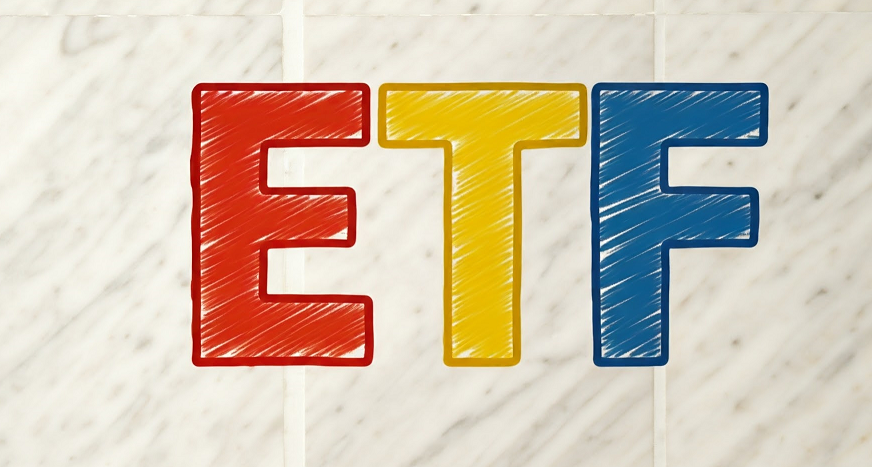In the world of investing, the pursuit of growth often comes hand-in-hand with the acceptance of risk. However, not every investor is comfortable with the roller coaster ride that high volatility can bring. This is where low volatility Exchange Traded Funds (ETF) step into the spotlight, offering a strategy to capture market gains while potentially reducing the risk of significant losses. Let’s delve into what these ETFs are, how they work, and how they can benefit your investment portfolio.
Understanding Low Volatility ETFs
Low volatility ETFs are designed to invest in securities that historically exhibit less price movement than the broader market. The underlying principle is based on the “low-volatility anomaly,” which suggests that stocks with lower volatility can outperform the market over time. This anomaly contradicts traditional finance theory, which assumes higher risk should yield higher returns.
These ETFs typically track indices that select stocks based on their historical volatility. Common methodologies include:
- Minimum Volatility Index: Selects stocks with the lowest volatility over a specific period.
- Low Volatility Index: Focuses on stocks from a larger index, like the S&P 500, that have the lowest volatility.
Benefits of Low Volatility ETFs
1. Risk Reduction: By investing in stocks that are less prone to wild price swings, these ETFs aim to provide a smoother investment experience, especially during market downturns. They tend to have lower drawdowns, meaning the peak-to-trough decline in portfolio value is less severe.
2. Potential for Outperformance: Over the long term, low volatility strategies have sometimes shown that they can deliver similar or even higher returns than the broader market with less risk. This is particularly appealing during bearish or highly volatile market phases.
3. Income Generation: Many low volatility ETFs are tilted towards sectors like consumer staples, healthcare, and utilities, which often provide consistent dividends, thereby offering an income component to the portfolio.
4. Diversification: While these ETFs might be concentrated in certain sectors, they still offer diversification within those sectors, potentially reducing unsystematic risk.
Notable Low Volatility ETFs
Here are some prominent ETFs that investors might consider:
- iShares MSCI USA Min Vol Factor ETF (USMV): One of the largest and most liquid low volatility ETFs, USMV seeks to track the MSCI USA Minimum Volatility Index. It has historically shown a lower beta compared to the S&P 500, suggesting less sensitivity to market movements.
- Invesco S&P 500 Low Volatility ETF (SPLV): This ETF tracks the S&P 500 Low Volatility Index, selecting the 100 least volatile stocks from the S&P 500. It’s known for its focus on sectors like utilities and consumer staples, which are often less volatile.
- iShares MSCI EAFE Minimum Volatility ETF (EFAV): For those looking to mitigate risk internationally, EFAV focuses on low volatility stocks in developed markets outside of the U.S., providing global diversification.
- Invesco S&P International Developed Low Volatility ETF (IDLV): Similar to EFAV, IDLV focuses on developed markets but follows the S&P BMI International Developed Low Volatility Index, aiming at stocks with the lowest volatility.
- iShares MSCI Emerging Markets Min Vol Factor ETF (EEMV): This ETF offers a way to invest in emerging markets with potentially reduced volatility, targeting stocks in countries like China, India, and Brazil.
| Ticker | Name | 2024 YTD | Weekly return | Monthly return | 2023 Return | 2022 Return | 2021 Return | 2020 Return |
|---|---|---|---|---|---|---|---|---|
| SPY | SPDR S&P 500 ETF Trust | 28.32% | -0.59% | 3.15% | 26.19% | -18.17% | 28.74% | 18.01% |
| USMV | iShares MSCI USA Min Vol Factor ETF | 18.94% | -2.00% | 0.56% | 10.34% | -9.42% | 20.84% | 5.52% |
| SPLV | Invesco S&P 500® Low Volatility ETF | 16.65% | -1.77% | -1.13% | 0.53% | -4.88% | 24.13% | -1.09% |
| EFAV | iShares MSCI EAFE Min Vol Factor ETF | 7.16% | -2.31% | 0.94% | 12.55% | -15.10% | 7.20% | -0.36% |
| IDLV | Invesco S&P International Developed Low Volatility ETF | 4.75% | -1.61% | 0.68% | 9.17% | -12.22% | 9.75% | -9.88% |
| EEMV | iShares MSCI Emerging Markets Min Vol Factor ETF | 9.92% | 0.03% | 2.30% | 7.78% | -13.94% | 5.05% | 6.79% |
How Low Volatility ETFs Mitigate Risk in a Portfolio
Case of Market Downturns: In scenarios where the market experiences sudden drops, low volatility ETFs typically lose less value than their broader market counterparts. For instance, during the 2008 financial crisis or the market downturns in 2020, these ETFs were observed to have shallower drawdowns.
Sector Concentration: Low volatility strategies often overweight sectors that are defensive by nature. These sectors tend to be more resilient during economic downturns, providing a buffer against market volatility.
Behavioral Finance: From a behavioral standpoint, low volatility ETFs can help investors avoid the panic selling that often exacerbates losses during market dips. Knowing your portfolio is built to withstand volatility might encourage you to stay invested, which is often beneficial over the long term.
Sharpe Ratio Advantage: These ETFs generally aim for a higher Sharpe ratio, which measures risk-adjusted return. A higher Sharpe ratio indicates better compensation for the risk taken, which aligns with the goals of risk-averse or conservative investors.
Considerations Before Investing
Performance Over Time: While low volatility ETFs can underperform in strong bull markets, their true value often shines in sideways or declining markets. Investors need to align this strategy with their investment horizon and expectations.
Expense Ratios: Always check the expense ratio. Lower costs can significantly impact long-term performance, especially when aiming for reduced volatility.
Sector Bias: The focus on certain sectors can mean missing out on the growth of more cyclical or technology sectors during bull markets.
Reinvestment Risk: If these ETFs are held for income, the lower capital growth might mean less money to reinvest, particularly if dividends are not growing.
Conclusion
Low volatility ETFs offer a strategic avenue for investors looking to mitigate risk without completely forgoing market returns. They serve as an essential tool in the arsenal of both individual and institutional investors aiming for a smoother investment journey. By incorporating these ETFs, one can craft a portfolio that not only aims to protect on the downside but also participate in the upside, albeit perhaps not as aggressively as a high-beta portfolio.
Remember, while these ETFs provide a degree of protection against market volatility, no investment is entirely risk-free. They should be part of a well-thought-out investment strategy that considers your overall financial goals, risk tolerance, and the economic landscape. As with all investments, due diligence, understanding the underlying assets, and possibly consulting with a financial advisor are recommended steps before making investment decisions.
In summary, low volatility ETFs can be a cornerstone for those seeking stability, potentially offering peace of mind in an often unpredictable market environment.




